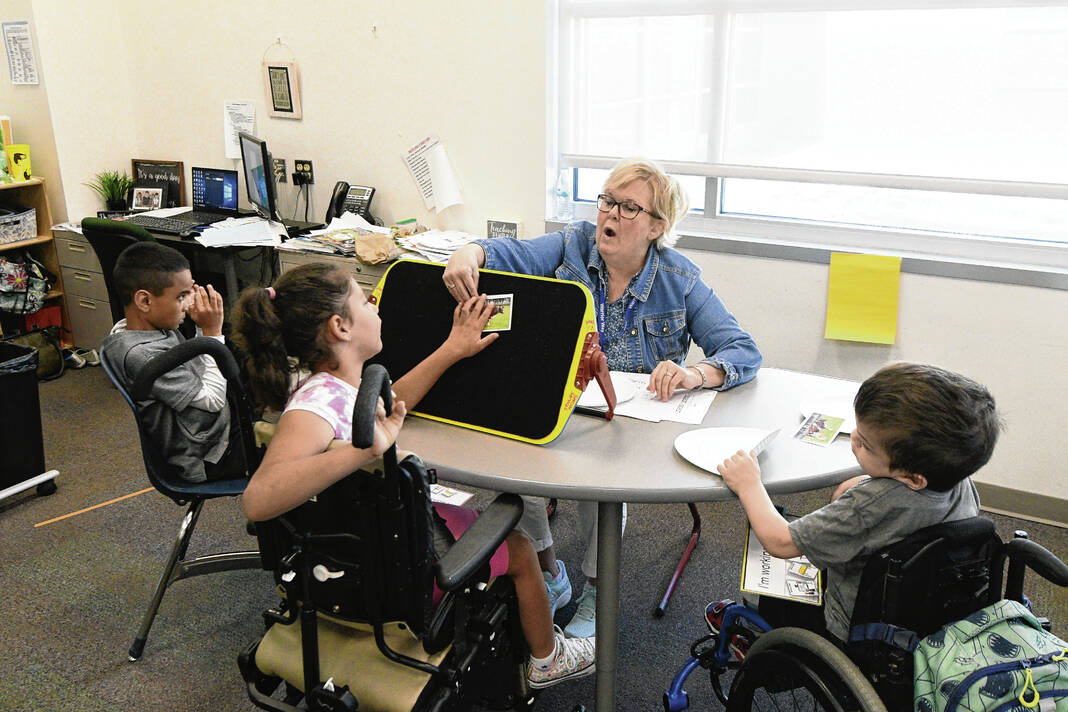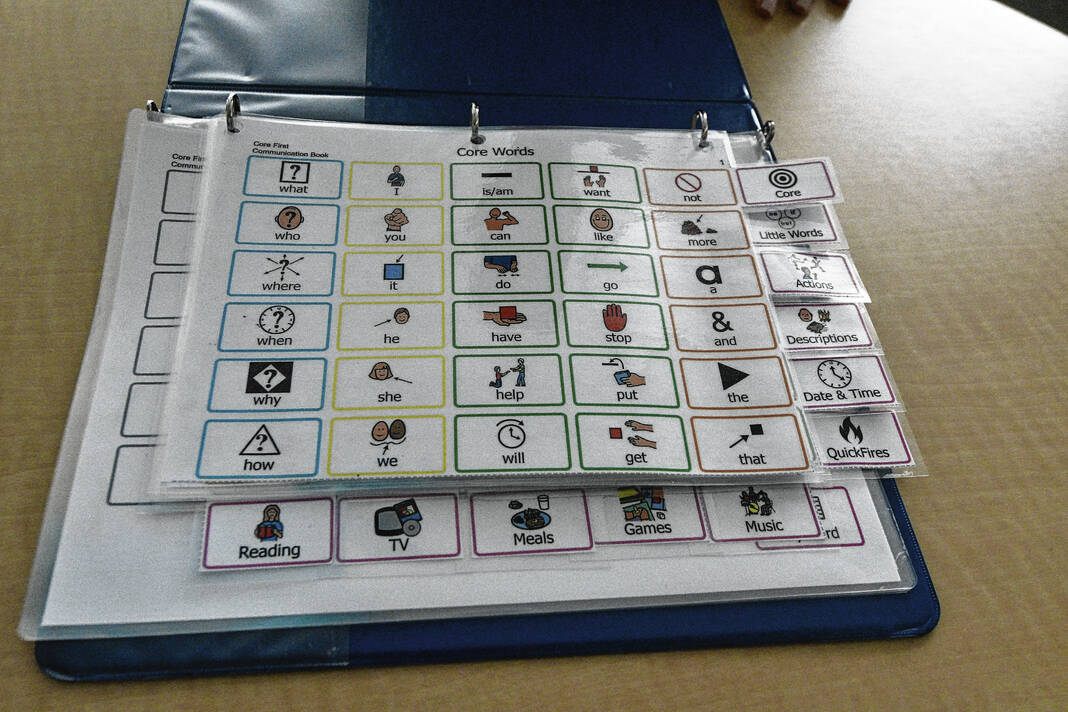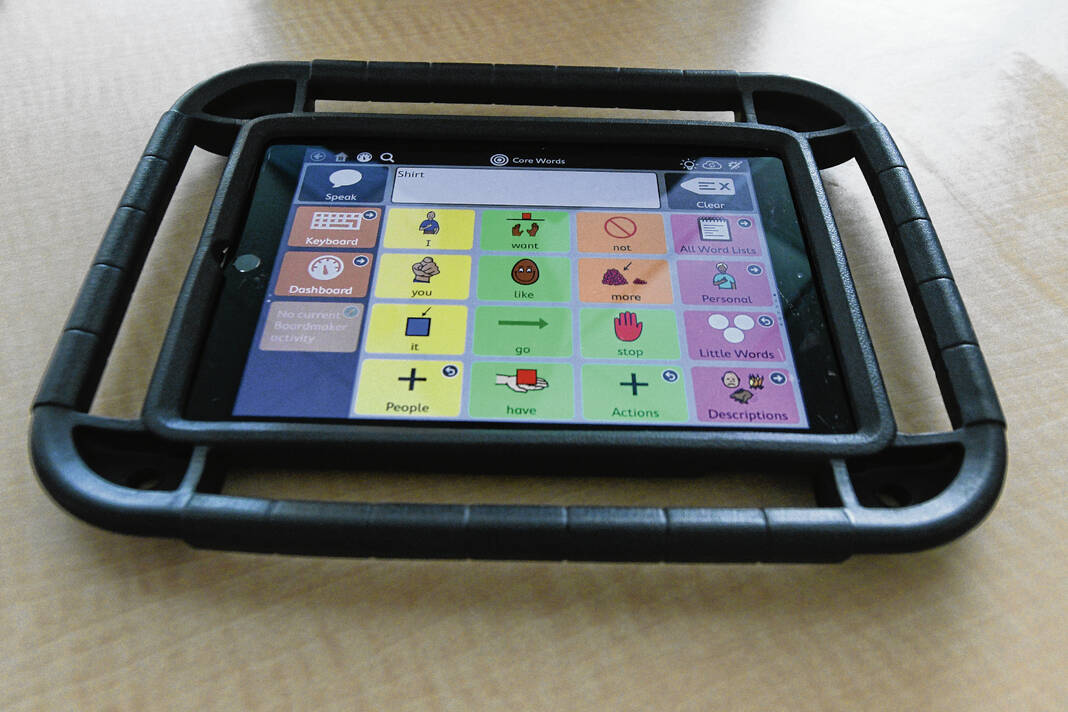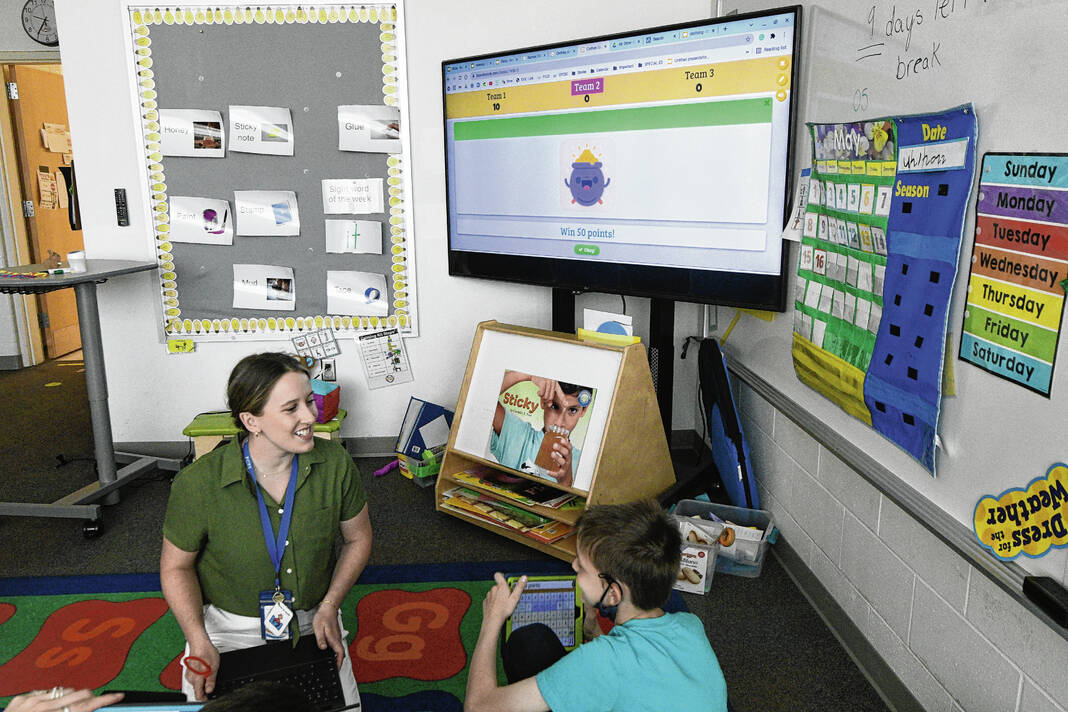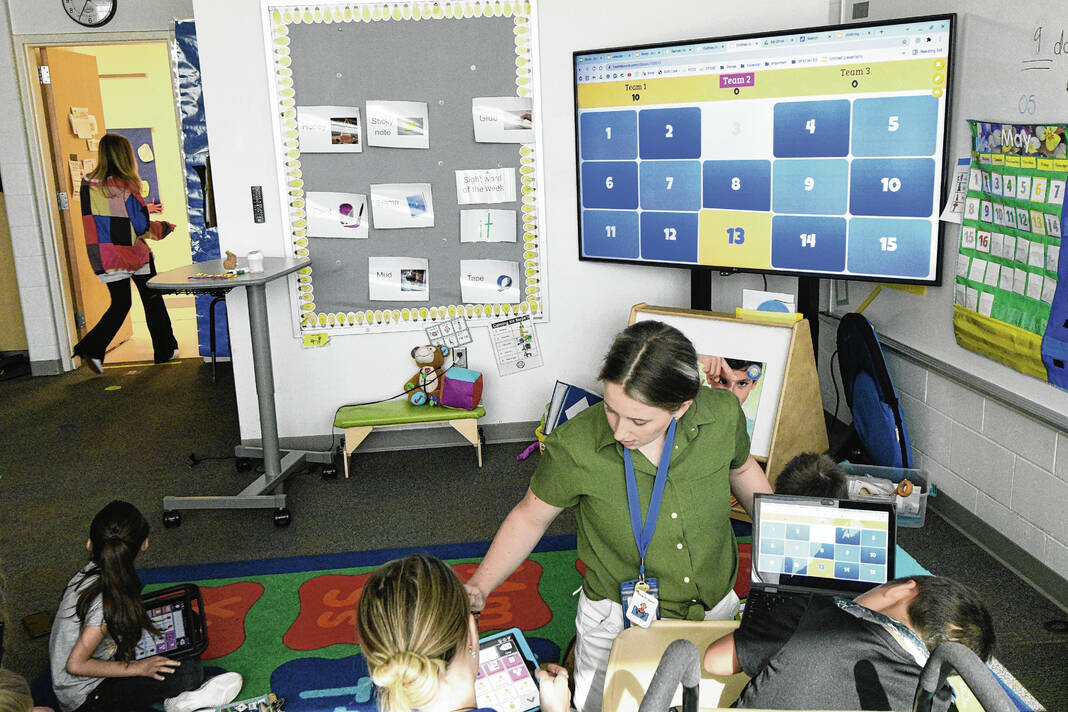At Pleasant Crossing Elementary School, students pushed pictures with words on screens to communicate through devices that spoke for them, while others flipped through similar, non-digital packets, pointing at the words to get a message across.
For non-verbal students, Clark-Pleasant schools administrators hope the use of technology, and in some cases, laminated packets with common words, will help students with severe developmental delays preventing them from communicating verbally, giving them the voice they never had.
The assistive technology and packets, part of what the school district is calling a lending library, were piloted through Pleasant Crossing and made possible by a $4,000 grant from the Clark-Pleasant Education Foundation. This coming school year, the lending library will expand to Whiteland Elementary School, and all materials will be accessible to all the school district’s students, said Jenifer Prenatt, assistant director of special education at Clark-Pleasant schools.
“The mission of Clark-Pleasant is to provide learning experiences and making sure all students reach their potential, and all means all students,” Prenatt said. “Making sure they reach their potential sometimes means we have to remove some barriers. Not all students learn the same way. The lending library provides equitable access to education for all our students, and the assistive technology removes barriers due to communication language barriers such as fine motor delays, processing and other delays.”
Some of the analog devices funded by the grant include slanted boards to help with writing, pencil grips and raised line paper. Technological devices include buttons that can be pressed to initiate a command, text-to-speech software and picture-word association tools, she said.
While some people may view technology as an accessory, for some students, it’s their lifeline, said Annie Wagner, a teacher at Pleasant Crossing.
“Some students have trouble communicating verbally. They understand and communicate but can’t get words out. This is their voice,” Wagner said. “It goes everywhere with them. It’s not just an accessory, it’s their communication.”
Some of the apps students use on those devices include Bamboozle, which teaches students how to locate different categories of topics and items, and TD Snap, which makes buttons bigger or smaller and includes age-based categories. For example, an elementary students’ app may include farm animals, while the app of a student in high school may include chemistry, she said.
Children without severe needs can also benefit from the technology, Prenatt said.
“Even students in a typical fifth grade class can benefit from specific apps like speech-to-text,” she said. “I have dyslexia and I have speech-to-text technology. It’s not just for one specific population; it’s universal design. What maybe was designed to benefit individuals with disabilities benefits general students as well.”
The learning library has widened students’ horizons significantly, said Lana Patterson, a teacher at Pleasant Crossing.
“Before we had assistive technology, students were unable to let us know their wants and needs, their choices and to interact with peers. They didn’t have a voice,” Patterson said. “Communication devices have opened a whole new world for students who are able to participate in the classroom, have friendships with peers and engage in their learning.”


